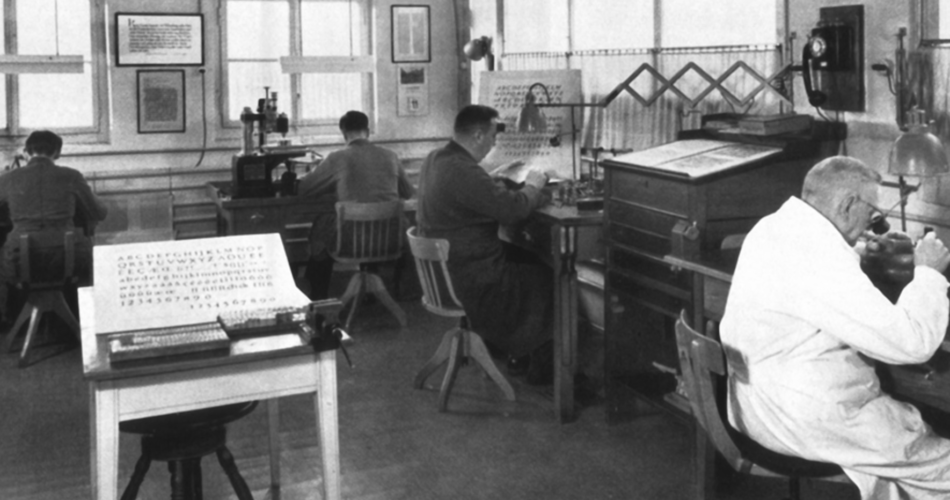Typography, a cornerstone of design, communication, and print, was in its prime in 1950. The Haas Type Foundry, one of the world’s most renowned type foundries, was a symbol of meticulous craftsmanship and innovation. In this article, we take a detailed tour of the Haas Type Foundry in 1950, delving into the artistry, innovation, and dedication that defined this iconic institution.
The History
Founded in 1898 in Switzerland, the Haas Type Foundry had a half-century legacy of producing a wide array of high-quality fonts and typefaces, making it a sought-after supplier for printers, publishers, and designers globally.
The Architecture
The Haas Type Foundry’s structure in 1950 was a stunning blend of craftsmanship and innovation, featuring an Art Nouveau design that showcased its dedication to beauty and precision. The ornate façade hinted at the treasures inside.
The Tour
Entering the foundry in 1950, visitors were welcomed by the distinct aromas of ink, paper, and molten metal. In the grand printing halls, rows of imposing printing presses awaited, ready to bring the meticulously crafted typefaces to life.
Craftsmanship
The tour highlighted the meticulous craftsmanship behind every typeface. Skilled typesetters created molds for each character, requiring keen attention to detail. The foundry’s precision in producing typefaces of various sizes and styles was remarkable.
Casters
The casting room held mesmerizing machines that converted molten metal into characters. Each font had a dedicated mold and machine, operating with astounding accuracy and speed.
Archives
The vast archives allowed visitors to explore typeface specimens, catalogs, and historical artifacts, providing insight into the evolution of typography and inspiring designers and printers.
Innovation and Design
In the design and production department, typographers and designers collaborated to create new typefaces, staying relevant in a rapidly changing world.
The Human Element
The foundry’s dedicated individuals, from meticulous typesetters to innovative designers and skilled machine operators, were the driving force behind this world of typography.
Conclusion
A tour through the Haas Type Foundry in 1950 offered a glimpse into a world where craftsmanship, innovation, and human dedication converged. The foundry’s commitment to typography, blending tradition with innovation, made it an iconic institution. While typography has evolved, the legacy of the Haas Type Foundry endures, a testament to the enduring art of typography.

